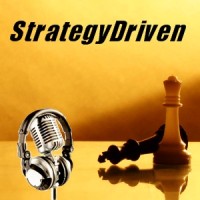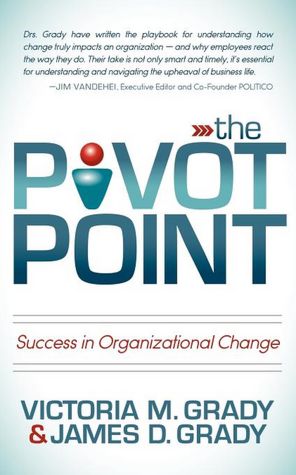Leadership Lessons from Zombies
Sometime in the past two years, perhaps while we were distracted by the vampire craze, zombies started presenting a more menacing presence. Scores of television programs, movies, and books have seemingly sprung from nowhere to teach us to survive a zombie attack. For example, Max Brooks, son of Mel Brooks and Anne Bancroft, has dominated the best seller list with his Zombie Survival Guide, a must-have for every survival-conscious home.
But there’s another must-have for any professional library: A Zombie’s Guide to Getting A Head (sic) in Business. This book will help you take both your leadership and strategy formulation to new heights. No survival guide, this book offers concrete tips about how to excel in the hot seat by acting like a zombie. Using the author’s zombie expertise as a foundation, here’s what I suggest:
- Stop dithering and start lurching forward. No one has to cajole a zombie to act, which clearly contrasts them to many leadership teams who dither rather than decide. These teams often opt for indecision, failing to recognize that not deciding is a decision – a decision to fall victim to the changing environment and other things you can’t control. You don’t write strategic objectives in stone; you put them in a Word file. When new information surfaces, you can change directions. But not having a clear direction and path for getting there will curse you to rest on your laurels and continue to settle for the success you’ve always had. Or maybe not. Maybe the economy has changed so drastically in your neck of the woods that what you’ve done to get here won’t get you anywhere else.
- Crash trough the glass ceiling like a zombie breaking through the walls of a farm house. So many leaders embrace limiting ideas. They settle for what they’ve always done, the status quo, sunk costs, and every manner of excuse not to change. A very successful consultant who is in her early fifties recently told me she thinks she’s getting too old to do consulting work. I said, “Are you nuts? You’re barely old enough to do it! Clients value experience.” Her limiting idea is my motivating idea. What limiting ideas hold you back?
- Turn your weaknesses into strengths – a missing arm or leg never stops a zombie. Some great company changes have started with a failure or weakness. Legend has it that a restaurant owner created fried ravioli, a St. Louis favorite, when he accidentally dropped the ravioli into the French fryer. What opportunities lurk in your organization? The 3M Company, formerly known as the Minnesota Mining and Manufacturing Company, is an American multinational conglomerate corporation based in Minnesota. With over 80,000 employees, they produce more than 55,000 products, including: adhesives, abrasives, laminates, passive fire protection, dental products, electronic materials, medical products, car care products. But the company founders didn’t set out to give us Post-It-Notes and Scotch Tape. They originally planned to sell the mineral corundum to manufacturers in the East for making grinding wheels. However, innovation and a willingness to learn from mistakes allowed the company to morph into what it is today.
- Trust your instincts. In the nocturnal hunt, or any hunt, the first impulse is usually the right one. If you suddenly get the feeling that a swath of swampland is mined against zombie attacks, it probably is. And if the whacky new product seems too good to be true, it probably is. Stick to your mission, vision, and values. These will help you force the tradeoffs that will help you avoid both implosion and explosion.
- Ignore that which is already dead. An error that many executives make, that no zombie ever makes, is wasting valuable time on sunk costs and things that are no longer priorities. Check the egos at the door. When it comes to setting strategy, only the future counts.
- ‘Bite once.’ A zombie’s bite transmits everything salient it has to contribute. It immediately ‘infects’ the other with zombie characteristics. No more need for follow-ups, emails, status reports, or ‘circling back.’ Bite and move on.
No matter where you want to go, and regardless of the daunting and difficult nature of the journey, a zombie has been through worse and ‘lived’ to tell about it. By incorporating the traits of a zombie, you too can become dynamic, brave, and unstoppable as any member of the legions of the living dead. Inside every zombie and effective executive reside core impulses to harness power. The first quarter of 2012 lies behind us, but the remaining three quarters remain. Arise from the grave of ineffectiveness and get ahead.
About the Author


 Change is difficult. Value illusive. Implementation of new organizational performance measures represents both change and sought after value, either of which can render the time and resources spent creating the new measures worthless. Consequently, it is incumbent upon those seeking to introduce the new measures to effectively test for acceptance and value contribution before committing the significant time and resources required for their development and implementation.
Change is difficult. Value illusive. Implementation of new organizational performance measures represents both change and sought after value, either of which can render the time and resources spent creating the new measures worthless. Consequently, it is incumbent upon those seeking to introduce the new measures to effectively test for acceptance and value contribution before committing the significant time and resources required for their development and implementation. Jeffrey Gitomer is the author of The Sales Bible, Customer Satisfaction is Worthless Customer Loyalty is Priceless, The Little Red Book of Selling, The Little Red Book of Sales Answers, The Little Black Book of Connections, The Little Gold Book of YES! Attitude, The Little Green Book of Getting Your Way, The Little Platinum Book of Cha-Ching, The Little Teal Book of Trust, The Little Book of Leadership, and Social BOOM! His website,
Jeffrey Gitomer is the author of The Sales Bible, Customer Satisfaction is Worthless Customer Loyalty is Priceless, The Little Red Book of Selling, The Little Red Book of Sales Answers, The Little Black Book of Connections, The Little Gold Book of YES! Attitude, The Little Green Book of Getting Your Way, The Little Platinum Book of Cha-Ching, The Little Teal Book of Trust, The Little Book of Leadership, and Social BOOM! His website,  StrategyDriven Podcasts focus on the tools and techniques executives and managers can use to improve their organization’s alignment and accountability to ultimately achieve superior results. These podcasts elaborate on the best practice and warning flag articles on the StrategyDriven website.
StrategyDriven Podcasts focus on the tools and techniques executives and managers can use to improve their organization’s alignment and accountability to ultimately achieve superior results. These podcasts elaborate on the best practice and warning flag articles on the StrategyDriven website.
 Victoria Grady, author of
Victoria Grady, author of  How often have you, as an executive or manager, looked at the cars in the parking lot as you come into or depart from your workplace and said to yourself, “So and so are really contributing to the organization,” based on seeing their cars. Or seeing no one else’s car reflected on your own performance as, “I’m a top contributor. I put in more hours than anyone else.”
How often have you, as an executive or manager, looked at the cars in the parking lot as you come into or depart from your workplace and said to yourself, “So and so are really contributing to the organization,” based on seeing their cars. Or seeing no one else’s car reflected on your own performance as, “I’m a top contributor. I put in more hours than anyone else.”